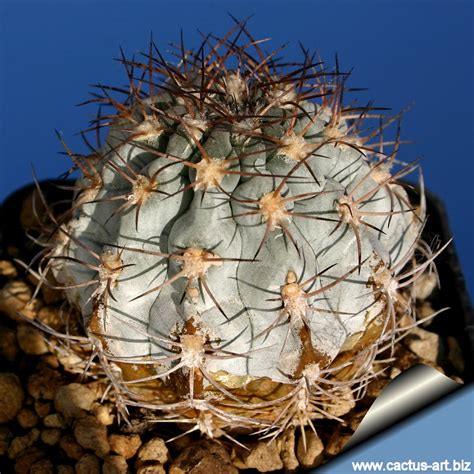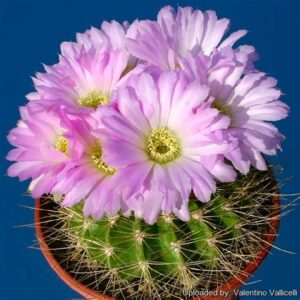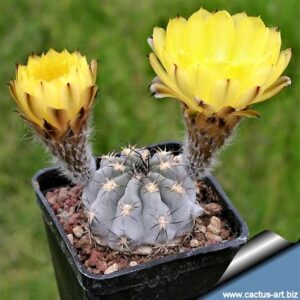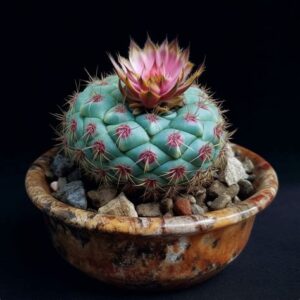Acanthocalycium Echinopsis Glaucum, commonly referred to simply as Acanthocalycium glaucum, stands as a striking exemplar within the realm of cacti. This intriguing species beckons enthusiasts and botanists alike with its unique morphology and aesthetic appeal. Possessing a crown of waxy, glaucous spines, its distinctiveness sets it a notch above many other cacti. Delving deeper into this exceptional plant unveils not only its biological attributes but also the lore and ecological significance surrounding it.
To appreciate Acanthocalycium glaucum fully, one must explore its taxonomic relations, natural habitat, and cultivation requirements. These facets not only highlight the biological intricacies of the species but also provide insights into the allure it holds for collectors and horticulturists around the globe.
Understanding the Botanical Classification of Acanthocalycium Glaucum
At the forefront of our exploration is the taxonomic categorization of Acanthocalycium glaucum. This cactus belongs to the family Cactaceae, which comprises a diverse range of succulent plants. Within this family, Acanthocalycium is a genus that includes various species, each exhibiting unique characteristics. Echinopsis, a term often used interchangeably, represents a clade that is closely related and encompasses several popular cacti types.
The classification of Acanthocalycium glaucum may seem straightforward but entails layers of historical context. Originally described in the late 19th century, its specific epithet, “glaucum,” references the distinctive bluish-green coloration of its epidermis, an attribute that captivates both the casual observer and the serious collector. The genus name, Acanthocalycium, derives from Greek roots meaning “thorn” and “cup,” indicative of the notable features one might observe upon close examination of its characteristic flowers.
In terms of morphology, Acanthocalycium glaucum typically displays a globular shape, growing to a height of approximately 10 to 30 centimeters. Its surface is adorned with prominent tubercles and robust spines, which serve both aesthetic and practical purposes. In their native habitat, these spines protect the plant from herbivores while also assisting in water conservation by providing shade.
The Home of Acanthocalycium Glaucum: Natural Habitat and Distribution
Acanthocalycium glaucum is indigenous to specific regions of South America, particularly Argentina, where it thrives in arid environments characterized by rocky substrates and minimal rainfall. The ecological niche this cactus occupies is critical for understanding its adaptations. The interplay between soil composition, sunlight exposure, and climatic conditions fosters an environment in which Acanthocalycium glaucum can flourish.
The specific growth conditions that characterize its native habitat highlight the importance of microclimates. These localized variations unlock a treasure trove of biodiversity, with Acanthocalycium glaucum finding a place among other resilient flora. Despite being well-adapted to extreme dryness, it is also capable of withstanding occasional rain, emphasizing its remarkable tenacity. However, exposure to excessive moisture can lead to root rot, a common threat that aspiring cultivators must heed.
Natural pollinators, such as bees and hummingbirds, are integral to the reproductive cycle of Acanthocalycium glaucum. The process of pollination is not only crucial for the species’ propagation but also fosters interdependence within its ecosystem. Furthermore, the plant’s vibrant blooms, which typically showcase a kaleidoscope of colors ranging from white to yellow, serve to entice these pollinators, creating a stunning visual spectacle in its natural setting.
The Cultivation Essential: Caring for Acanthocalycium Glaucum
The allure of Acanthocalycium glaucum has led to its popularity among succulent enthusiasts and botanical gardens worldwide. Cultivation, while straightforward, does necessitate a nuanced understanding of the plant’s specific needs. Providing optimal growing conditions is vital for maintaining the health and vibrancy of this remarkable cactus.
When embarking on the journey to cultivate Acanthocalycium glaucum, one should prioritize soil quality. The ideal substrate is well-draining, composed of a mix of coarse sand, perlite, and organic matter. This blend mimics the gritty soil found in its native habitat, allowing for sufficient aeration and drainage.
Light requirements are equally paramount. Acanthocalycium glaucum thrives in bright, indirect sunlight. While it can endure direct exposure in moderate doses, prolonged periods of intense light may result in sunburn, hence it is prudent to provide filtered light during peak sun hours. Indoor growers should aim for a south-facing window or consider utilizing grow lights to ensure the plant receives adequate illumination.
Watering practices for Acanthocalycium glaucum demand careful consideration. During the vigorous growing season of spring and summer, the plant should be watered liberally, allowing the soil to dry out completely between sessions. Conversely, during the dormant winter months, watering should be significantly reduced to prevent water logging and potential root rot.
Fertilization, while not strictly necessary, can enhance growth and flowering capabilities. A diluted cactus fertilizer during the growing season can stimulate further development. However, caution should be taken as excessive fertilization may lead to rampant growth that compromises the plant’s structural integrity.
Common Observations: Why Collectors Flock to Acanthocalycium Glaucum
Collectors and enthusiasts find themselves drawn to Acanthocalycium glaucum for an assortment of reasons. Its striking visual appeal is certainly a primary factor; the unique coloration of its skin combined with its eye-catching spines and flowers creates a striking presentation that is hard to resist. Furthermore, the interplay of form and color can serve as a captivating topic for discussion among cactus aficionados.
However, the fascination with Acanthocalycium glaucum transcends mere aesthetics. The plant’s adaptability and resilience in the face of environmental stressors evoke appreciation for the complexity of nature. Observing how this species endures harsh conditions fosters a profound respect for its survival mechanisms.
The cultural significance of cacti, including Acanthocalycium glaucum, also plays a pivotal role in its allure. Many cultures hold cacti in high regard, associating them with longevity, resourcefulness, and endurance. The symbolism inherent in Acanthocalycium glaucum speaks to broader themes of resilience, making it an inspiring subject that resonates with plant lovers beyond their initial interest in horticulture.
In conclusion, Acanthocalycium Echinopsis Glaucum, with its rich tapestry of biological, ecological, and cultural attributes, presents an enticing opportunity for exploration. Whether for its striking appearance or its exceptional adaptability, this cactus deserves a prominent place in any collection and continues to spark curiosity in the hearts and minds of those drawn to the more arid regions of the botanical world. Understanding its requirements and appreciating its heritage can deepen one’s connection with this remarkable organism, transforming the act of caring for it into a rewarding venture that nourishes both the plant and the gardener alike.





Leave a Comment